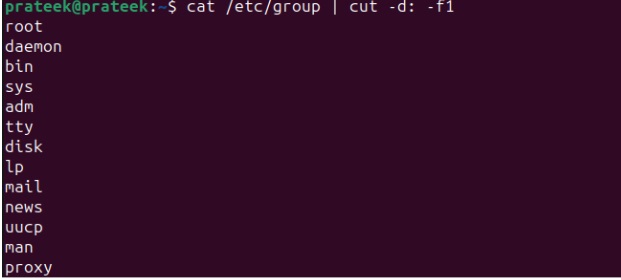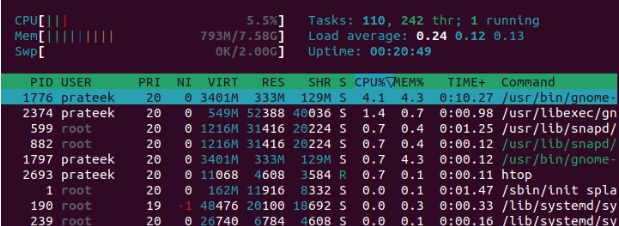Linux works well as a multiuser os. Lots of customers can access a single OS at the same time without translating each other. Nonetheless, if others can access your directory sites or data, the threat may increase.
Therefore, from a safety viewpoint, protecting the information from others is crucial. Linux has attributes to manage gain access to from approvals and ownership. The possession of documents, folders, or directory sites is categorized into three parts, which are:
- Individual (u): This is the default proprietor, also called the documents’s designer.
- Team (g): It is the collection of several customers with the very same authorizations to access folders or documents.
- Various other (o): Those users not in the above 2 classifications belong to it.
That’s why Linux uses simple means to transform documents consents without headaches. So in this fast blog, we have actually included all the possible methods to change data permissions in Linux.
How to Adjustment Data Permissions in Linux
In Linux, mostly Linux file authorizations are divided into 3 parts, and these are:
- Read (r): In this classification, individuals can only open and check out the documents and can’t make any type of adjustments to it.
- Write (w): Customers can edit, erase, and customize the file web content with written approval.
- Perform (x): When the user has this permission, they can perform the executable script and accessibility the documents information.
| Proprietor Representation | Change permission using the driver | Consent symbols for symbolic mode | Permission icons for absolute mode |
| User → u | To add usage ‘+’ | Read → r | To add or subtract read use ± 4 |
| Team → g | To subtract use ‘-‘ | Create → w | To include or subtract checked out use ± 2 |
| Other → o | To set usage ‘=’ | Implement → x | To add or deduct read usage ± 1 |
As you can see from the above table, there are 2 sorts of icon depiction of authorization. You can use both of these modes (symbolic and absolute) to alter documents permissions making use of the chmod command. The chmod refers to the modification mode that allows individuals to change the gain access to approval of files or folders.
Utilizing chmod Symbolic Mode
In this approach, we utilize the icon (for proprietor- u, g, o; for permission- r, w, x) to add, deduct, or set the approvals utilizing the adhering to syntax:
chmod owner_symbol > setting permission_symbol > filename >
Prior to altering the documents consent, initially, we require to locate the current one. For this, we use the ‘ls’ command.
![]()
Below the consent icons come from the following proprietor:
- -‘ : reveals the file type.
- ‘rw-‘: reveals the permission of the user (read and create)
- ‘rw-‘: reveals the consent of the group(read and compose)
- ‘r- -‘: reveals the permission of others (read)
In the above photo, we highlighted one data in which the user has actually reviewed and compose authorization, the team has read and create authorization, and the other has just review consent. So here, we are going to add executable authorization to others. For this, utilize the complying with command:
![]()
![]()
As you can see, the perform authorization has been added to the other group. At the same time, you can likewise transform the multiple approvals of various proprietors. Complying with the above instance, once more, we change the consents in it. So, right here, we include executable permission from the customer, remove write approval from the group, and add write authorization to others. For this, we can run the below command:
chmod -v u+x,g-w, o+ w os.txt


Note: Use commas while separating proprietors, however do not leave space between them.
Utilizing chmod Absolute Mode
In a similar way, you can transform the authorization through outright setting. In this method, mathematical drivers (+, -, =-RRB- and numbers represent the approvals, as displayed in the above table. For example, allow’s take an instance and the upgraded authorization of the documents information is as follows:
![]()
![]()
Mathematical representation of the approval:
| User | Review + Compose | Consent is represented as
665 |
| 4 + 2 = 6 | ||
| Team | Review + Write | |
| 4 + 2 = 6 | ||
| Various other | Check out + Execute | |
| 4 + 1 = 5 |
Now, we are mosting likely to get rid of check out consent from the user and others, and the last computation is:
| Customer | Read + Write | -Read (- 4 | Upgraded authorization is stood for as
261 |
| 4 + 2 = 6 | 6 – 4 = 2 | ||
| Group | Review + Compose | — | |
| 4 + 2 = 6 | 6 | ||
| Various other | Read + Execute | -Check out (- 4 | |
| 4 + 1 = 5 | 5 – 4 = 1 |
To update the permission, make use of the complying with chmod command:
![]()
![]()
Modification Individual Possession of the Documents
In addition to altering the file permission, you may likewise have a scenario where you have to change the documents ownership. For this, the chown is made use of which stands for the modification owner.


The documents details represent the following information:
filetype > file_permission > user_name > group_name > file_name >
So, in the above instance, the proprietor’s or individual name is ‘prateek’, and you can change the user name that just feeds on your system. Before transforming the username, very first checklist all the users utilizing the adhering to command:
Or
awk -F :’ etc’ / Now / passwd


change, you can present the username of your new or data in between basic these names. The syntax alter to documents the owner adheres to is as Keep in mind:
sudo chown new_username > filename >
consent: Sudo called for is in some cases Based on.
result the above wish to, we change below the username from ‘prateek’ to ‘proxy.’ To do this, we run the Modification command in the terminal:


Team Ownership Documents of the Initially
listing, groups all the are present that utilizing in your system adhering to the pet cat command:
etc / group / change | cut -d: f 1


The ‘chgrp’ command (group transforms) Below the filegroup. alter, we team the using name from ‘prateek’ to ‘disk’ adhering to the Verdict command:


Handling
data authorizations necessary is accessibility for information control and security overview. In this focused on, we altering documents the permissions a function in Linux. It has where regulate you can ownership customer (group, permissions, others) and compose (read, execute, Customers). include can deduct, set, or permissions the demands according to their Users. quickly can change file the consents with using the chmod command absolute the symbolic and techniques methods.

